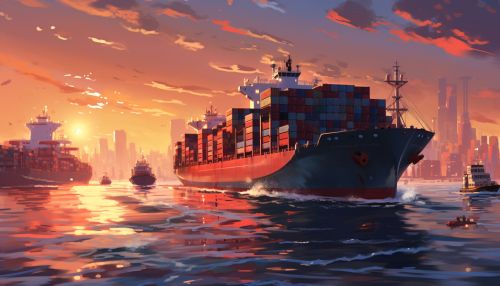Transportation and Artificial Intelligence
Overview
Artificial Intelligence (AI) has been increasingly applied in the field of transportation, leading to significant changes in how transportation systems operate. This article explores the intersection of transportation and AI, detailing how AI technologies are being used to improve efficiency, safety, and sustainability in various transportation sectors.
AI in Road Transport
AI has been extensively used in road transport, with applications ranging from autonomous vehicles to traffic management systems.
Autonomous Vehicles
Autonomous vehicles, also known as self-driving cars, are one of the most prominent applications of AI in transportation. These vehicles use AI algorithms to interpret sensory data and make decisions about vehicle control, including steering, acceleration, and braking.


Traffic Management Systems
AI is also used in traffic management systems to optimize traffic flow and reduce congestion. These systems use AI algorithms to analyze traffic data and adjust traffic signal timings accordingly. Some advanced traffic management systems also use AI to predict traffic conditions and implement preemptive measures to prevent congestion.
AI in Rail Transport
AI has also found applications in rail transport, particularly in train scheduling and maintenance.
Train Scheduling
AI algorithms are used in train scheduling to optimize the allocation of trains on the rail network. These algorithms take into account various factors, including passenger demand, track capacity, and train availability, to generate efficient and reliable train schedules.
Maintenance
AI is also used in the maintenance of rail infrastructure and rolling stock. Predictive maintenance systems use AI to analyze data from sensors installed on trains and tracks, allowing potential faults to be identified and addressed before they cause disruptions.
AI in Air Transport
In the air transport sector, AI is used in areas such as flight planning, air traffic control, and aircraft maintenance.
Flight Planning
AI algorithms are used in flight planning to optimize flight paths and schedules. These algorithms take into account factors such as weather conditions, air traffic, and fuel efficiency, to generate optimal flight plans.
Air Traffic Control
AI is also used in air traffic control to manage the flow of aircraft in the airspace. AI algorithms analyze flight data and make decisions about aircraft sequencing, runway allocation, and conflict resolution.
Aircraft Maintenance
Similar to rail transport, AI is used in aircraft maintenance to predict and prevent faults. AI algorithms analyze data from aircraft sensors to identify potential issues and schedule maintenance tasks accordingly.
AI in Maritime Transport
In the maritime transport sector, AI is used in applications such as vessel scheduling and navigation.
Vessel Scheduling
AI algorithms are used in vessel scheduling to optimize the allocation of vessels in ports and on shipping routes. These algorithms take into account factors such as cargo demand, port capacity, and vessel availability, to generate efficient and reliable vessel schedules.
AI is also used in maritime navigation to assist ships in avoiding obstacles and choosing optimal routes. AI algorithms analyze data from ship sensors and navigational charts to make decisions about ship control and route selection.


Future of AI in Transportation
The use of AI in transportation is expected to continue growing in the future, with potential applications in areas such as drone delivery, smart cities, and sustainable transport.
Drone Delivery
AI is expected to play a key role in the development of drone delivery services. AI algorithms will be used to control drones, optimize delivery routes, and manage drone traffic.
Smart Cities
In smart cities, AI will be used to integrate and optimize various transportation modes, creating a seamless and efficient urban transport system.
Sustainable Transport
AI can also contribute to sustainable transport by optimizing fuel consumption, reducing emissions, and promoting the use of renewable energy sources in transportation.
